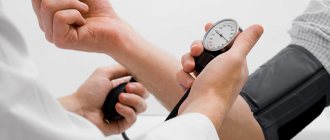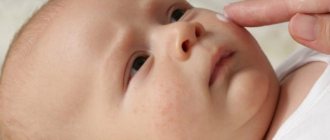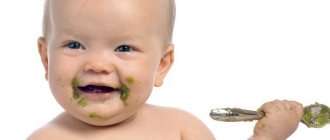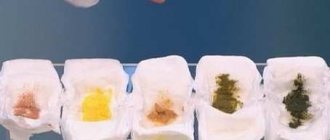Traditional treatment
If the mother monitors the child’s health, controls his diet, and uses folk remedies that maintain hemoglobin concentration within acceptable limits, he will not develop anemia.
It is possible to raise a child’s hemoglobin level without medications. It is enough to use folk recipes that have stood the test of time. Simple remedies can help increase iron concentration. Children use many of them with pleasure. They increase hemoglobin in infants aged 7 months and older children.
A particular home remedy should not be used if it causes an allergic reaction or other side effect. If undesirable manifestations occur (rash, itching, etc.), the drug is discontinued.
It is possible to increase the concentration of iron-containing protein using:
- Decoction of rose hips. Take 5 tablespoons of berries and infuse them in 1 liter of boiling water. The product is given to the baby in the morning. Add 0.5 teaspoon of honey and a little lemon juice to 0.5 cups of extract.
- A mixture of buckwheat and walnuts helps raise the level of iron-containing protein. The ingredients are ground to a powder and combined with honey. All components are taken in equal quantities, 1 glass each. The dose for a one-year-old baby is 1 tablespoon per day.
- Fruit and honey mixture. Walnut kernels, raisins, dried apricots are ground in a blender and combined with honey in equal quantities. Take a teaspoon 2-3 times a day.
- If hemoglobin is low, use fresh fruit and vegetables. Give children apple juice mixed with carrot and beetroot in proportions 2:1:1. Daily dose – 200–250 ml.
- Fruit-honey mixture with aloe. Grind walnuts, dried apricots, prunes, raisins, honey and juice obtained from aloe leaves are mixed. The ingredients are taken in equal quantities. Use 2-3 teaspoons daily.
- To quickly replenish iron deficiency, use a simple folk recipe. Thanks to him, anemia is treated even in tiny children. Oat grains are simmered in milk for an hour. For 500 ml of milk take ½ cup of oats. Babies are given a teaspoon. Older children drink the decoction as tea.
- Herbal collection. Boil 750 ml of water and pour into a thermos. Add 3 tablespoons of St. John's wort, blackberry and chamomile, 2 tablespoons of nettle, leave. Drink 250 ml warm three times a day.
It is strictly forbidden to treat anemia in a child without consulting a doctor. Self-medication leads to the development of complications. Without tests, it is impossible to track hemoglobin levels. Folk remedies and medications will not help if the baby suffers from another type of anemia rather than iron deficiency. Only a doctor can understand the reasons for low hemoglobin.
Treatment methods
Raise hemoglobin in the following ways:
- medications;
- folk remedies;
- useful habits.
Use of medications
Parents should be aware that any drug treatment should be prescribed only by the attending physician. After all, all drugs have side effects and contraindications. Only a pediatrician can prescribe the medicine that is right for your child. They are cumulative or short-acting. The average course is approximately one month.
Use of traditional medicine
When breastfeeding, you especially need to monitor the lifestyle the mother herself leads. Namely: what he eats, drinks, whether he rests well, whether he spends enough time in the fresh air with the baby. Let's figure out how to proceed:
- Include certain foods in your diet.
- Eliminate unnecessary things.
- Monitor your daily routine.
How to increase hemoglobin in breast milk? Mom can easily find a complete list of iron-rich foods online. Then all that remains is to buy them and prepare a variety of dishes. After all, the level of red blood cells can be raised by eating not only buckwheat and pomegranate juice, but also red vegetables, fruits, fish, meat, berries and nuts. Drink every day a glass of dried fruit compote or carrot juice diluted with water one to one. If it's in season, eat strawberries and bake cranberry pie.
Greens are now your best friend. A salad with spinach and parsley makes a great dinner. And for dessert you can enjoy a fruit salad, dark chocolate or a hematogen bar. Thus, the mother’s correct and tasty menu will become the basis for the immunity of a healthy child.
How can you begin to increase a child’s hemoglobin with the start of complementary feeding? You can give a decoction of rose hips, compote of dried apricots and raisins, and puree of green vegetables.
Useful habits
In addition to a balanced diet, you must follow simple rules:
- The baby needs to walk at least four hours a day.
- Newborns should sleep in a well-ventilated room or outside if weather conditions permit.
- Daily exercise and hardening.

The physical and psychological state of the mother now needs to be monitored especially carefully. After all, breast milk becomes not only food, but also medicine. Therefore, young mothers are strongly recommended to:
- eat a balanced diet;
- sleep fully;
- avoid stress and anxiety.
All actions aimed at increasing the hemoglobin of children must be agreed upon with the leading pediatrician.
Treatment should be stopped if the child:
- the stool became dark and liquid;
- be sick;
- constipation appeared;
- abdominal pain began;
- an allergic reaction occurred.
Doctors resort to drug treatment quite rarely when it comes to a strong decrease in hemoglobin. The baby is usually prescribed drops. They are easily absorbed by the body and have no side effects. Intramuscular drugs are very rarely used.
If the doctor has prescribed medications, you should not limit yourself to them. Treatment must be approached rationally. Combine the main course of taking medications with the right foods.
Within a month, if you follow all the doctor’s recommendations, the hemoglobin in your blood should return to normal. A repeat general blood test will reveal (or not) the pathology, and only then will the question of the advisability of further treatment be decided.
Prevention
So that all your efforts are not in vain, you should think in advance about the prevention of iron deficiency. Maintaining a normal level of hemoglobin in the blood is quite simple.

- Mom should be cheerful, healthy, rested.
- Mother's milk has miraculous properties. It contains everything your baby needs. Therefore, it is very important to eat right and prolong breastfeeding as long as possible. The mother's diet should contain products of not only plant, but also animal origin.
- Maintaining a clear daily routine. Daily walks from 4 to 6 hours a day. Healthy sleep combined with physical activity will do the trick. Only for walks it is better to choose parks, squares and green courtyards. It’s better to sleep outside or in a well-ventilated, quiet room with curtained windows.
Normal hemoglobin in a child is the basis for his good health and proper development. By following simple rules of prevention, parents take care of the future of their baby.
But if suddenly low hemoglobin occurs in a baby, do not despair. First, go for a consultation with a pediatrician, take the necessary tests and direct your efforts to correct the situation. Secondly, help the young mother establish a daily routine and create a rational menu. Third, supplementing with iron-containing foods may eliminate the need for drug treatment. But carefully observe how your baby reacts to medications and products. If you notice something wrong, stop treatment immediately and consult your pediatrician.
Do not neglect physical activity, frequent walks in the fresh air and healthy sleep.
Methods for increasing hemoglobin
When a baby develops hemoglobin deficiency, comprehensive measures are required to eliminate the problem.
A nursing mother is able to independently predict the occurrence of such a pathology. If during pregnancy a woman lived in a student dormitory and ate mostly “dry crust” and instant noodles, then the likelihood of anemia in the newborn is high.
When a woman has lost a lot of blood during childbirth, the likelihood of anemia in the baby increases. With regular and careful monitoring of the baby, you can easily notice signs of low hemoglobin.
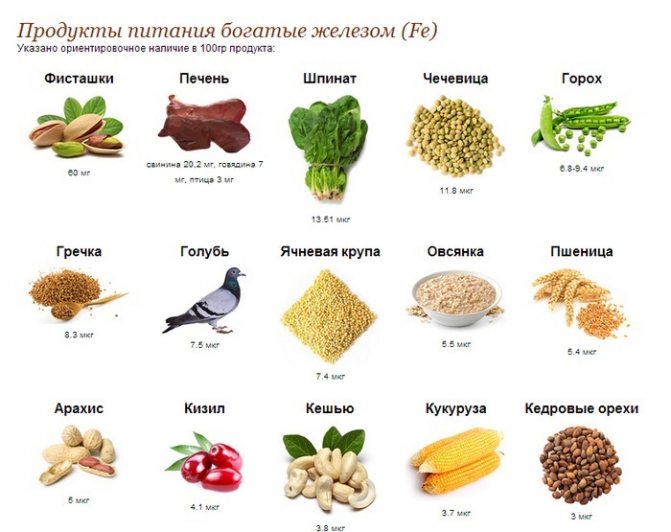
It should be emphasized that the hemoglobin level in each infant has its own individual value. During the first year of life, extreme values fluctuate between 100 and 220 g/l.
At values below 100, anemia is diagnosed and an increase in hemoglobin is required
Pediatricians focus the attention of parents and guardians on the fact that it is very important to provide appropriate conditions for the synthesis of hemoglobin in the body
The main condition is breastfeeding. If possible, you should breastfeed your baby for as long as possible, at least up to a year.
In order for food to be fully absorbed, it is necessary to ensure the uninterrupted functioning of the gastrointestinal tract. The condition of the infant's digestive system requires regular monitoring.
Animal proteins must be included in a baby's diet. Complementary feeding of infants begins at 4 months, although some pediatricians recommend doing this from six months.
For mild anemia, apple or Brussels sprouts puree helps raise hemoglobin.
Currently, a large number of ways to increase hemoglobin in infants have been developed and tested in practice.
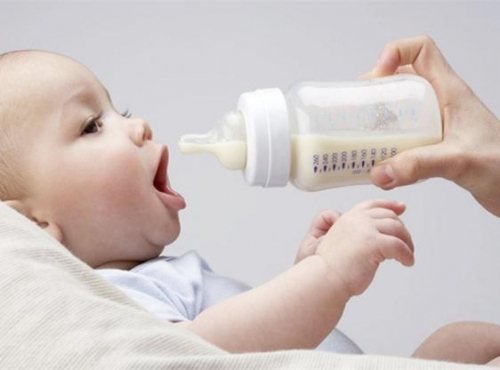
When choosing certain products that stimulate the formation of hemoglobin in the child’s body, you need to carefully monitor the consequences.
The specificity of the situation is that modern babies are increasingly suffering from allergies. There is a lot of talk about the causes and dangers of allergies, and this is not just empty talk.
Formulas for a child suffering from anemia should be prepared in small quantities, gradually increasing the portion to the optimal volume.
Iron supplements
It often happens that all diets to increase hemoglobin in infants do not bring the desired result. This situation cannot be tolerated under any circumstances. In this kind of situation, the pediatrician prescribes special iron-containing drugs.
It must be emphasized that giving such medications to a child of his own choice is strictly prohibited: only a specialist can write a prescription and explain the rules for taking the drug. Medicines are available in liquid form and added to complementary foods.
When raising the hemoglobin level in a baby with the help of medications, you need to be aware that the baby’s stomach has difficulty digesting such additives.
Video:
Therefore, it is necessary to monitor the baby’s reaction and, in case of severe consequences, simply replace the medicine.
A negative sign is loose, black stools or prolonged constipation. The course of treatment is prescribed for a period of up to 3 months.
In a month you need to donate blood for testing for control. Sometimes you have to use another drug.
How to boost a breastfed baby?
To rid a baby of anemia, a breastfeeding mother should eat well and rationally . Its menu should include on an ongoing basis:
- fish and meat, beef tongue and offal, poultry;
- fruits (strawberries, cranberries, currants, wild strawberries and blueberries), seasonal berries (peaches, plums, persimmons, bananas, quinces), vegetables (greens, potatoes, onions, spinach, green vegetables, beets, tomatoes);
- porridges and grains - buckwheat, lentils and other legumes (if the child does not have tummy problems), rye, rice.
of freshly squeezed juices from carrots, pomegranates or beets in the mother's menu helps increase the baby's hemoglobin level You should also regularly eat eggs, seafood, dried fruits, caviar, mushrooms (in small quantities), walnuts, hematogen and dark chocolate.
Symptoms
With anemia, a child experiences:
- poor appetite;
- fatigue, weakness;
- drowsiness;
- decreased activity;
- apathy;
- dizziness;
- cracks in the corners of the lips.
The child’s nails break, hair loses its shine, becomes dull, falls out, the skin turns pale and acquires a yellowish tint. The epithelium is dry, flaky. There are dark circles under the eyes, the heart rate is increased. Immunity is low, the baby is constantly sick. Diseases are difficult and cause complications. If iron deficiency is not corrected, children experience delayed physical and mental development.
Iron deficiency anemia of newborns
Symptoms
- skin, mucous membranes of the conjunctiva of the eyes are pale;
- general lethargy, moodiness, slight excitability;
- sweating;
- no appetite or it is reduced;
- sleep disturbance;
- the child does not tolerate physical activity well;
- dry skin;
- painful cracks in the corners of the mouth;
- fragility and hair loss;
- dullness and brittleness of nails.
The diagnosis of iron deficiency anemia is finally confirmed by laboratory tests, which take into account such indicators as hemoglobin content, the average concentration of hemoglobin in an erythrocyte, the average volume of an erythrocyte, the iron content in the blood serum, the iron-binding capacity of the blood serum, etc.
Causes of iron deficiency anemia in children
The reasons for the development of iron deficiency anemia in children are different. They can be divided into two large groups: external (exogenous) and internal (endogenous)
Exogenous causes include:
1. Reduced intake of iron into the child’s body. The 5% of iron that is excreted from the body in feces must be replaced. If iron does not come from the environment through diet (meat, eggs, liver, fish, vegetables, fruits) or it is bound by other foods and converted into indigestible complexes (when consuming milk, legumes, tea, coffee, nuts), then this percentage is not replenished, and the body borrows it from the liver. When liver reserves are depleted, iron deficiency anemia develops.
2. With increased iron consumption. Girls begin menstruation during puberty. This entails a loss of blood, and therefore hemoglobin, so at this time girls need additional iron supplies to the body.
3. Bleeding. Bleeding entails the consumption of iron from the body, which requires its correction.
4. Artificial feeding. Breastfeeding a child protects him from the development of anemia, since the child receives iron from the mother's milk, and breast milk proteins do not bind it into insoluble complexes, unlike cow's milk proteins, on the basis of which all formulas are made. Therefore, transferring a child to artificial feeding too early can lead to the development of anemia.
Endogenous causes include:
1. Diseases of the stomach and intestines. These can be gastritis, enteritis, colitis, peptic ulcer of the stomach and duodenum. With all these diseases, the integrity of the mucous wall of the stomach and intestines is compromised. Because of this, the absorption surface decreases, and iron from the intestines does not return to the body. Also, with peptic ulcers of the stomach and duodenum, periodic bleeding from ulcers is observed, which is a chronic loss of iron in the body.
2. Reduced concentration of vitamin B12 in the body. Vitamin B12 is involved in the transfer of iron from the intestinal lumen into the bloodstream. When its concentration decreases, the process of iron capture occurs less actively, and a large amount of iron is released into the environment.
3. Reduced iron reserves in the “depot” (liver). As mentioned earlier, the iron “depot” is formed in the child during pregnancy. If the mother had colds during pregnancy, did not eat well, or if it was a multiple pregnancy (two or more children), the deposition of iron in the liver is disrupted and the child is born without an additional supply. Usually after birth there are no manifestations of this, since the amount of hemoglobin and iron content in the blood is normal, but after 3-4 months these reserves are depleted and signs of anemia appear.
4. Anemia can occur with increased destruction of red blood cells. This can occur when:
a) ingestion of toxic substances into the body, in particular arsenic, the poison of some mushrooms; b) diseases associated with a decrease in the lifespan of erythrocytes (sickle cell anemia, macrocytosis of erythrocytes); c) diseases of the spleen (splenomegaly).
Causes
If a newborn baby is breastfed, then the reason for the decrease in hemoglobin lies in the health of the nursing mother. The following factors can cause this condition:
- features of intrauterine development of the baby;
- hereditary and infectious intrauterine diseases;
- iron deficiency anemia in the mother during pregnancy;
- severe toxicosis (gestosis) during pregnancy;
- low motor activity of the baby;
- a diet for a nursing woman that does not contain animal protein (vegetarian diet).
A drop in hemoglobin in an infant may be due to the characteristics of pregnancy, poor nutrition of the pregnant woman, as well as the presence of bad habits (drinking alcohol and smoking).
A less common cause of this condition is the rapid growth of a child under 1 year of age, when his body needs additional sources of iron.
If a woman suffered from iron deficiency anemia while carrying a baby, then her body does not have sufficient resources to provide a newborn baby through breast milk.

Symptoms of iron deficiency anemia in children
The main sign of the development of iron deficiency anemia is pallor of the mucous membranes and skin. However, the range of symptoms for this disease can be much wider.
So, for example, with a lack of iron, a child, in addition to pallor, may experience:
excessive dryness of the skin, peeling and cracking; disturbance of taste and smell; brittleness and curvature of nail plates; hair loss and weak hair growth; decreased appetite; development of caries; diseases of the digestive organs; excessive fatigue. The child often experiences headaches, he is emotionally unbalanced, and complains of tinnitus. In some cases, delayed psychomotor development is possible; delayed physical development. May present with urinary incontinence or sphincter weakness; decreased blood pressure and shortness of breath. Listening to the child's heart often ends with the identification of functional systolic murmurs; frequent respiratory diseases that are quite acute. This is due to damage to barrier tissues.
There are a lot of characteristic symptoms, but diagnosing iron deficiency anemia can only be done after a general blood test, which will determine the level of red blood cells, hemoglobin, as well as a change in the color indicator.
Drug therapy
Iron deficiency anemia usually occurs in children. If hemoglobin levels are low, both the one-year-old baby and the older child need urgent treatment. A pediatrician determines the cause of anemia and prescribes treatment.
If you have iron deficiency anemia, you need to adjust your diet and take medications prescribed by your doctor. Medicines are prescribed for three months. An increase in hemoglobin occurs if the child takes:
- long-acting medications: Ferograd, Ferrum-lek, Irovit;
- short-term agents: Ferrous fumarate, Ferrous sulfate.
If an infant or young child is sick, the doctor will prescribe drops or syrup. Children with fears are given chewable lozenges; the active substances from them are gradually absorbed into the blood from the intestines.
Positive dynamics should occur after 30 days of treatment. It is determined by blood tests. The lack of therapeutic effect is due to:
- wrong dose;
- misdiagnosis (non-iron deficiency anemia);
- Irregular use of medications.
General information about hemoglobin
Low hemoglobin
(in medicine - anemia, iron deficiency anemia) is a low content of red blood cells in the blood. The main task of red cells is to transport and distribute oxygen molecules to organs and tissues to obtain energy and ensure the vital functions of the body. A low hemoglobin level will negatively affect the overall development and physical condition of the infant.
In babies under one year of age, the hemoglobin level in the blood should not be lower than 105 g/l.
In children in the second year of life, anemia is indicated by an indicator
of less than 100 g/l.
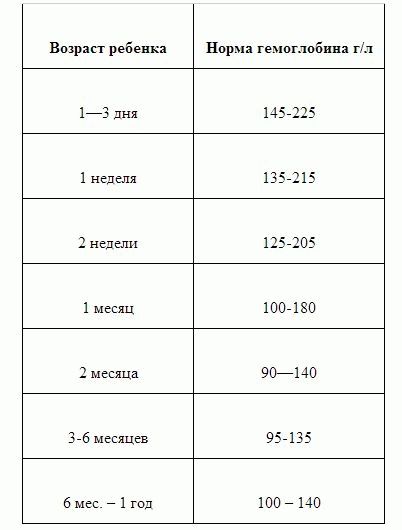
Causes of hemoglobin loss in the body
There are many reasons for the decrease in red blood cells in the blood of an infant. Factors that may contribute to this include:
- External (surgeries, unbalanced diet, anemia of the pregnant mother);
- Internal (hereditary pathology, immune, infectious diseases);
- Features of intrauterine development.
The intrauterine period of development and formation of the child’s body depends entirely on the health of the mother
, organizing her proper nutrition, the presence/absence of bad habits, hereditary diseases, etc. The supply of iron accumulated by a newborn during intrauterine development will be enough for about the first six months. After this time, a decrease in hemoglobin occurs. In the future, normal hemoglobin levels can be maintained through continued breastfeeding and.
When artificially feeding a baby, the level of red blood cells should be maintained using special fortified baby food with the addition of complementary foods (meat, fish, fruits, vegetables, vitamins) in subsequent months, which can correct the hemoglobin level.
It is necessary to take into account the intensive development and growth of the child in the first year of life, when significant changes occur in height and body weight. Accordingly, the consumption in energy production increases, and therefore in the production of red blood cells, which the body may not be able to cope with for various reasons.
Conditions for normal hemoglobin formation
- Breastfeeding should continue for as long as possible.
- The diet of a nursing mother and a bottle-fed infant must be balanced.
- Normal functioning of the gastrointestinal tract and hematopoietic system.
- No acquired or hereditary blood diseases.
- The presence of animal protein in food.
Symptoms of iron deficiency anemia
Symptoms of low hemoglobin in an infant can be divided into primary and secondary.
Unfortunately, parents do not always pay attention to such primary signs as: decreased appetite, constant weakness, increased fatigue, and the general unsatisfactory condition of the child. The progression of the disease in the future can be expressed in the following external signs:
The progression of the disease in the future can be expressed in the following external signs:
- pale skin (up to a jaundiced tint);
- unreasonable increase in temperature to 37.5º;
- dark circles under the eyes;
- drowsiness;
- dizziness;
- cardiopalmus;
- dry skin.
Prevention and treatment of iron deficiency anemia
It is necessary to treat anemia in infants, as it will lead to oxygen starvation of the whole body, will depress the functioning of the nervous system, create the preconditions for a lag in general and mental development, and will worsen the general condition of the baby. Iron deficiency anemia can be easily prevented by balancing your child's diet.
When breastfeeding, the baby's need for iron will be fully satisfied until almost 6 months due to the good digestibility of iron in milk (up to 50%), which is significantly higher than in other products. By the end of the first year of life, the child’s diet has been significantly expanded, thus it is possible to adjust the amount of iron entering the body.
Buckwheat, apples, beets, meat, liver, apple and pomegranate juices
contain high iron content However, pomegranate juice must be diluted with water (1:1) to avoid problems with the gastrointestinal tract.
Thus, in order to increase the hemoglobin level in an infant, you need to eat:
- Lots of fruits: blueberries, apricots, dried apricots, apples, strawberries, pomegranate;
- Lots of meat: beef, turkey, liver, veal;
- Any products made from wheat flour;
Treatment of anemia (low hemoglobin) with drugs should be carried out as prescribed by a pediatrician.
Artificially fed
For children with iron deficiency anemia who are bottle-fed, special adapted formulas in which the iron content is increased.
But you should not choose such food for your child on your own - the mixture can only be purchased on the recommendation of a pediatrician or children's nutritionist and only after undergoing the necessary tests and examinations.
It is recommended to start complementary feeding for children with anemia with those vegetables in which the iron content is maximum, but at the same time they can be normally absorbed by the child - for example, you can start feeding the baby Brussels sprouts, and buckwheat is ideal for porridges.
When the child gets older and it’s time for meat feeding, it is advisable to prepare turkey, beef or chicken puree for him. Rosehip decoction and compote made from various dried fruits help to increase hemoglobin well.
If the child does not have allergies, then he can be given pomegranate juice in small quantities three times a day.
How to increase hemoglobin in children using natural products
Young children in the first year of life are often susceptible to anemia, which is the result of insufficient hemoglobin levels in the blood. Anemia is quite dangerous for a child, as it leads to a decrease in the body’s immunity and resistance and slows down the child’s development. Its level can usually be determined by the results of routine blood tests. A pediatrician who detects a low level of hemoglobin in the blood is often advised to start taking special medications in order to increase hemoglobin in children's blood.
However, in many cases, this measure is an extreme measure, and not every mother wants to drug her child from an early age. Very often, it is possible to increase hemoglobin in children’s blood by adding natural products to the children’s diet that stimulate its production.
Foods that can increase hemoglobin in children.
When choosing foods high in iron and vitamins for your child, it is worth remembering that you cannot offer him those that cause allergies.
How to increase hemoglobin in a child using folk remedies:
Recipe 1: take 1 cup (250 ml) of rosehip infusion, add a couple of drops of lemon juice and 1 teaspoon of natural honey (if there are no allergies). This healthy vitamin drink contains a huge amount of hemoglobin and vitamin C. You need to drink it on an empty stomach; half a glass is enough for a child;
Recipe 2: Take walnuts, dried apricots, natural honey, large sweet raisins (in a ratio of 1:1:1:1) grind in a blender, mix into porridge and give the child a few spoons of the mixture every day. In addition to increasing the level of hemoglobin in the blood, such a cocktail of dried fruits also saturates the baby’s body with all the necessary vitamins.
Recipe 3: 1/2 cup freshly squeezed apple juice (preferably red apples), 1/4 cup beet juice and 1/4 cup carrot juice. Mix the juices and give it to the baby to drink half an hour before feeding. Before this, you need to give the child a spoonful of sour cream or baby cream, since fat is necessary for proper absorption. This juice cannot be stored, so the indicated norms must be divided into days.
Recipe 4: grind a cup of walnuts and a glass of raw, thoroughly washed buckwheat in a blender, add 1 glass of natural honey to the mixture, mix everything. Give your baby 1 tablespoon of the mixture every day. It can also be consumed by a nursing mother - it perfectly supports the heart and stimulates lactation. It is enough for children to consume 1 tablespoon daily.
As we see, if the situation is not critical, then it is quite possible to increase hemoglobin in children with simple healthy and natural products, which, moreover, will also be sources of energy and vitamins for the growing organism.
Means for increasing hemoglobin in a child’s blood are extremely varied - you just need to choose the one that suits your baby.
14 Ways Cats Show You Their Love There is no doubt that cats love us as much as we love them. If you do not belong to the category of people who are favorable to this.
Why do you need a tiny pocket on jeans? Everyone knows that there is a tiny pocket on jeans, but few have thought about why it might be needed. Interestingly, it was originally a place for storage.
10 interesting facts about intimacy that you probably didn't know Check out the most interesting and impressive facts about sexual activity that will surprise you.
13 signs that you have the best husband Husbands are truly great people. What a pity that good spouses don't grow on trees. If your significant other does these 13 things, then you can s.
Why you can’t look a cat in the eyes for a long time There have long been many superstitions associated with cats. One of the most common is that you can’t look them in the eye. Below we will tell you where yes came from.
How to look younger: the best haircuts for those over 30, 40, 50, 60 Girls in their 20s don’t worry about the shape and length of their hair. It seems that youth is created for experiments with appearance and daring curls. However, already last.
Norms of hemoglobin content in the blood depending on the age of the child
| Child's age | Normal hemoglobin content in blood, g/l |
| 1-3 days | 145-225 |
| 1 Week | 135-215 |
| 2 weeks | 125-205 |
| 1 month | 100-180 |
| 2 months | 90-140 |
| 3-6 months | 95-135 |
| 6 months-1 year | 100-140 |
As you can see, the highest hemoglobin levels are observed in children immediately after birth.
It should be noted that hemoglobin itself in newborns is not the same as in adults, since it has an increased ability to bind and transport oxygen. At the same time, it is less resistant to temperature and acidity of the environment. Hemoglobin of the fetus and newborns is called fetal hemoglobin. Over time, this type of hemoglobin changes to adult hemoglobin. A decrease in hemoglobin levels most often occurs simultaneously with a decrease in the number of red blood cells in the blood. In medicine, this condition of the body is called anemia, which is not a specific disease, but may be a sign of it or indicate another pathological condition of the body.
Important! A decrease in hemoglobin levels most often occurs simultaneously with a decrease in the number of red blood cells in the blood. In medicine, this condition of the body is called anemia, which is not a specific disease, but may be a sign of it or indicate another pathological condition of the body.
However, the most common is anemia caused by iron deficiency or iron deficiency anemia. Actually, this is what we will talk about next.
Doctor Komarovsky talks about low hemoglobin in children
Causes of low hemoglobin levels associated with iron deficiency (iron deficiency anemia) During the neonatal period, the level of hemoglobin is closely related to the characteristics of pregnancy and childbirth. Here are some of them.
- mother's anemia during pregnancy;
- premature birth;
- early aging of the placenta;
- premature or multiple pregnancy;
- Clamping the umbilical cord too early.
Subsequently, the reasons for the low hemoglobin content in a healthy infant at birth are usually due to the completeness of his nutrition, as well as the nutrition of the baby’s mother, who is breastfed. Adequate nutrition here, first of all, means adequate intake of iron, the lack of which leads to iron deficiency anemia.
A little theory about low hemoglobin in children
Hemoglobin is a complex chemical compound consisting of two parts: an iron atom and a special protein. It is found in red blood cells and gives the blood its red color.
The function of hemoglobin is to capture an oxygen atom in the lungs and carry it through the arteries to every cell of the body. The cells exchange oxygen for carbon dioxide, which is transported through the veins back to the lungs. Where hemoglobin is ready to pick up a new portion of oxygen again. This endless process allows all tissues and organs of the human body to fully develop.
A decrease in the number of hemoglobin in the blood leads to the fact that the body, and primarily the child’s nervous system, does not receive enough important oxygen. This reduces the performance of organs and resistance to diseases. With a constant lack of oxygen, increased fatigue and lethargy appear, and appetite decreases. Children are developmentally delayed and have difficulty learning new material.
Reasons for decreased hemoglobin in children
In order to know how to avoid anemia, you need to understand the causes of low hemoglobin.
- The origins of this problem may lie at the very beginning of the formation of the child’s body, that is, at the stage of pregnancy. If a woman carrying a child is poorly nourished and has low hemoglobin, then the baby is born with anemia.
- After birth, the second reason for a decrease in hemoglobin in a baby arises - inadequate nutrition of the nursing mother. Nature created it so that breast milk contains everything that is necessary for the development of a child. But this is violated if a woman purposefully excludes meat and cereals from her diet. And two people suffer, because both mother and baby lack iron.
- In the case of artificial feeding, the baby’s body cannot absorb a sufficient amount of iron from formulas. And cow's milk binds iron and removes it from the body.
- Another cause of anemia may be an insufficient amount of vitamin B12, which mediates the transfer of iron into the blood.
- Among other things, anemia can be caused by: allergies, worms, diseases, bleeding, constipation and diarrhea.
How to increase hemoglobin in a child
How to increase a child's hemoglobin without resorting to medications? This is possible if the decrease is insignificant. If there is an acute lack of iron, then you cannot do without medications prescribed by a doctor. But even in this case, experts recommend adjusting the nutrition of mother and child so that it regularly contains foods rich in iron and vitamins B12.
It is worth noting that it is very difficult to increase hemoglobin in a child under one year old only by adjusting the mother’s diet and introducing healthy foods into the baby’s diet. Therefore, here the doctor will definitely prescribe iron-containing drugs.
Foods containing sufficient amounts of iron and vitamins include:
- buckwheat, beans, peas, lentils;
- meat and fish;
- beets, potatoes, pumpkin, spinach, parsley, carrots;
- pomegranate, apples, persimmons, apricots;
- cranberries, currants, blueberries, strawberries;
- egg, nuts, dried apricots, hematogen.
Among other things, you need to take a walk every day and play outdoor games. After all, if there is enough hemoglobin and little oxygen, then the body will continue to suffer and not develop fully.
In what cases does the problem arise?
Low hemoglobin is not always a consequence of iron deficiency. In this case, taking medication will not be appropriate.
Why might low hemoglobin be detected? The reasons may be as follows.
- Perhaps the child’s body does not have enough vitamins B12 or folic acid.
- Late feeding. By six months, there are no longer enough vitamins for a breastfed baby. It is with this period that the first complementary foods are associated, which help supplement the diet with necessary vitamins and microelements. Formula-fed babies receive the same dose of all nutrients at all times.
- The reasons may lie in the woman’s improper, poor-quality nutrition. The diet should contain equal amounts of vegetable and meat dishes.
- The reason for the decrease in hemoglobin levels may be the baby’s low physical activity and rare exposure to the street.
- Disorders associated with the course of pregnancy and those that occurred during childbirth (poor nutrition during pregnancy, large blood loss during childbirth, premature birth of a child, toxicosis, anemia in the woman herself).
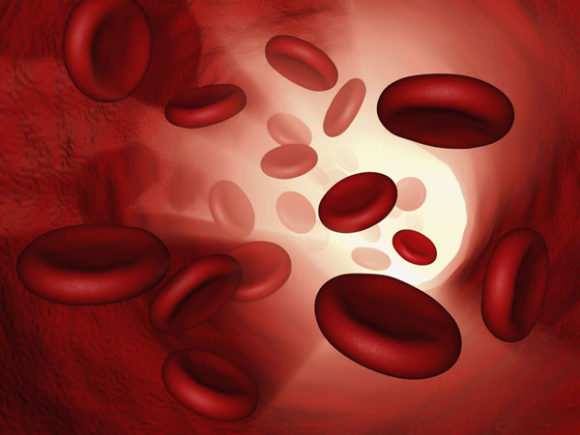
It may be that iron enters the body in sufficient quantities, but is poorly absorbed. The reasons may be related to poor bowel function or an incorrect balance of other elements. For example, copper and manganese help absorb iron, while lead interferes with this process. In these cases, in order to increase blood counts, it is enough to properly organize the child’s lifestyle:
- A variety of high-quality and natural food.
- Active lifestyle.
- Eliminate stressful situations.
- Organize a good rest.
Normal hemoglobin level in children
You will need to do a general blood test. Try to periodically monitor your results and check monthly.
Take into account generally accepted standards for hemoglobin levels in the blood:
- Up to 2 weeks – 135-200 g/l.
- From 2 weeks to 1 month – 115-180.
- 1-2 months – 90-130.
- 2-6 months – 95-140.
- 6-12 months – 105-140.
- From 1 to 5 – 110-140.
- From 5 to 10 – 115-145.
- From 10 to 12 – 120-150.
After 12 years, the norm is different for girls and boys. So, for the former it is in the range of 112-152 up to 15 years and 115-153 up to 18 years. The guys have 120-160 and 117-160, respectively.

In infants under 6 months of age, a decrease in hemoglobin is often observed. This is explained by the fact that the iron received during intrauterine development has been used up, and a new portion can only be supplied with breast milk or formula. Therefore, mother should eat more foods containing iron. The mixtures, of course, must also be balanced.
Signs of a decrease in blood levels
There are three degrees of severity of anemia (anemia).
- A decrease in hemoglobin within 90 – 110 g/l – mild anemia.
- The level decreases to 70 g/l - moderate severity.
- Hemoglobin less than 70 g/l is severe.
Mild anemia is most common. There are practically no symptoms at this stage. Treatment will consist of taking iron supplements. This treatment is prescribed only by a doctor in accordance with the age, weight and condition of the child.
The mother herself can recognize signs of a decrease in hemoglobin. The following symptoms indicate a violation of the norm of hemoglobin in the blood:
- pallor of the skin, special attention is paid to the face and palms;
- white spots and stripes on the nails;
- the skin becomes dry and flaky;
- the child often suffers from colds;
- frequent bowel movements are observed;
- appetite decreases;
- the baby gets tired quickly, lethargic, drowsy.
Treatment
Identified anemia requires urgent action. The pediatrician is obliged to determine its cause and prescribe the correct treatment. Often you can get by with diet correction, but in difficult cases this will not be enough.
Drug treatment consists of taking long-acting or short-acting iron-containing drugs.
Children are prescribed oral medications - their effect occurs several days later than after injections, but has virtually no side effects.
Injections are permissible only in exceptional cases, in case of serious intestinal diseases.
The course of taking the drugs lasts 3 months. It should not be interrupted even after iron deficiency has been eliminated. In this way, microelement reserves are replenished, which prevents the re-development of anemia.

Medicines for children are safe, well tolerated, come in a convenient form for all ages and have a pleasant taste. These can be drops, syrup, chewable tablets. A noticeable result from the treatment occurs within a month.
If no effect is observed, the dose may have been chosen incorrectly or the diagnosis may have been misdiagnosed.
Do not self-medicate under any circumstances! Exceeding the dosage may lead to complications including vomiting, dermatitis and allergies. Many parents try to cure anemia with hematogen alone, forgetting that this is just a nutritional supplement and not a medicine.



